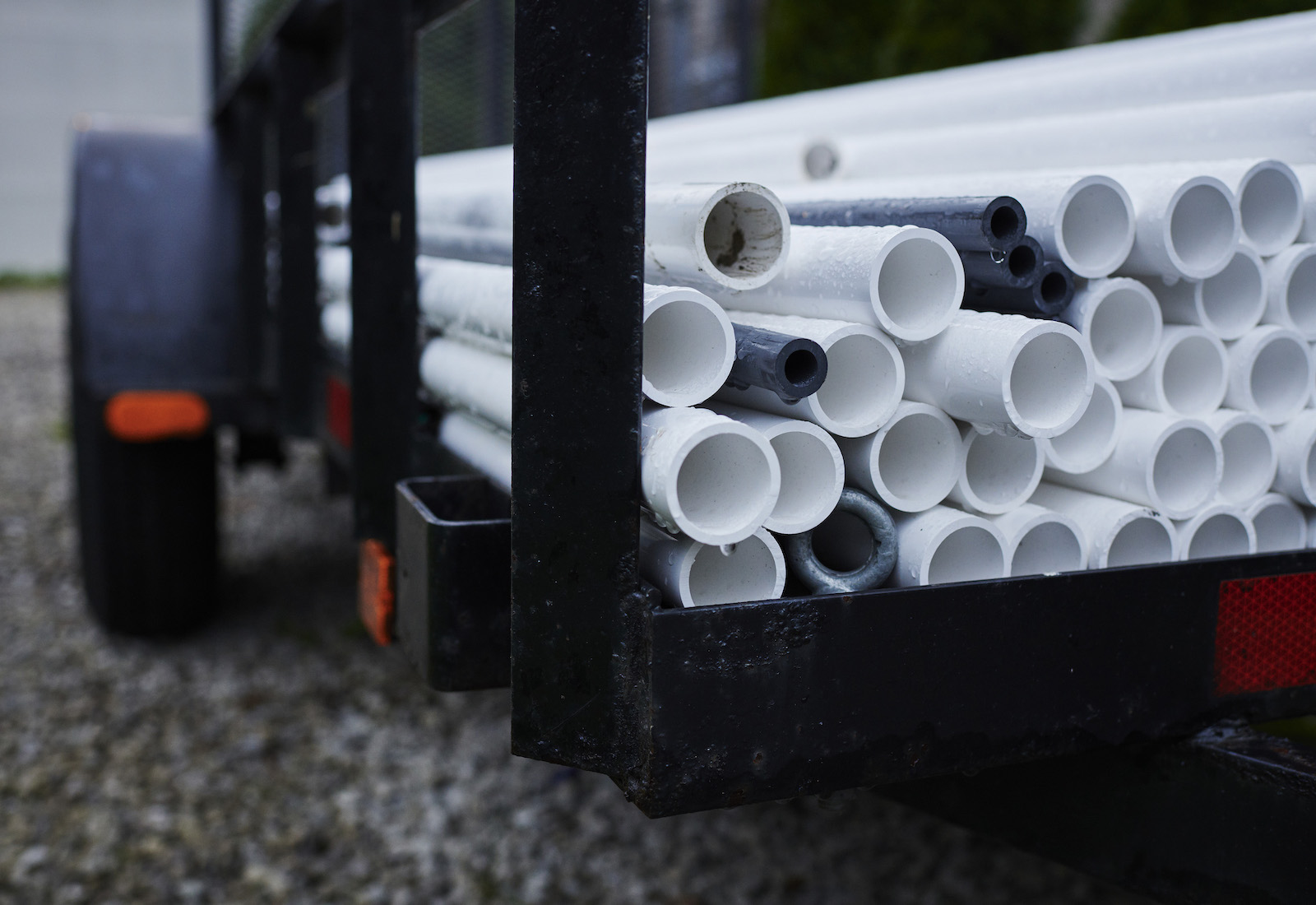Across the country, states and cities are replacing lead pipes to address concerns over lead-contaminated drinking water, an urgent health threat. But environmental advocates are concerned that a popular alternative piping material could pose its own dangers.
A new report released Tuesday by the advocacy group Beyond Plastics warns that pipes made from polyvinyl chloride, or PVC — a kind of rigid plastic commonly used in construction — can leach hazardous chemicals into drinking water, making them a “regrettable substitution” for lead pipes. The authors urge state and local policymakers to consider non-plastic alternatives like copper and stainless steel.
“Communities that opt to replace their lead service lines with plastic pipes may well be leaping from the frying pan into the fire,” Judith Enck, Beyond Plastic’s president and founder and a former regional administrator for the Environmental Protection Agency, or EPA, wrote in an introduction to the report.
Co-published with the nonprofits Environmental Health Sciences and the Plastic Pollution Coalition, the report is a response to the bipartisan infrastructure law that the Biden administration enacted in 2021. Of the $1 trillion in federal funding authorized by the law, some $15 billion was directed to state and local efforts to tear out lead water pipes. Lead transferred from these pipes into drinking water can lead to neurological and reproductive damage, seizures, hypertension, and more, as demonstrated by the public health records of Flint, Michigan, the site of the 2014-2016 water crisis. But the EPA offered no guidance on what to replace those pipes with, leaving local governments to determine the answer for themselves.
PVC is often considered an appealing option, thanks to its low cost. But research suggests that a concerning stew of chemicals can make its way from PVC piping into the drinking water it conveys. Among these chemicals are hormone-disrupting organotins and vinyl chloride, the key building block for PVC and a known human carcinogen.
It’s unclear exactly how much of these chemicals gets transferred from PVC pipes into people, but experts say they can be harmful even at very low doses. “PVC is a horror show,” Bruce Blumberg, a professor of development and cell biology at the University of California Irvine, told the authors of the report.
Additional chemicals that have been found leaching from PVC pipes include benzene, styrene, tetrahydrofuran, methylene chloride, and other volatile organic compounds. These compounds, which may be released into drinking water when PVC pipes are exposed to high heat, are variously linked to cancer, immune suppression, or damage to the nervous and reproductive systems.
Meanwhile, Beyond Plastics says existing systems to protect the public from PVC-related contaminants are inadequate — and potentially compromised by industry influence. The EPA doesn’t have legally enforceable drinking water standards for the vast majority of chemicals used commercially by humans, including organotins, and those that it does regulate are usually tested for at water treatment plants, before water travels through the pipes that lead to people’s homes.
To ensure pipes are safe, the EPA relies on NSF, an international nonprofit formerly known as the National Sanitation Foundation. NSF sets its own standards for how much of certain chemicals are allowed to leach from PVC pipes, and charges pipe manufacturers for a certification saying their products meet those standards.
Enck raised concerns about conflicts of interest in the standard-setting process, not only because NSF gets industry funding from those piping certification fees but because industry representatives sit on the NSF committees that propose and vote for water quality and exposure standards. (Public health experts also sit on these committees, but one former member told Beyond Plastics that their voices were “absent or very quiet.”)
“Shouldn’t this be the role of government?” Enck said. “We would not expect a coal plant to certify whether they’re complying with air pollution laws.” She also noted that NSF typically only tests for leaching chemicals on a short-term timeframe, potentially failing to capture what happens as PVC sits in the ground over years and decades.
NSF did not respond to Grist’s request for comment. The EPA said it has supported the development of NSF’s plumbing safety standards and that they require evaluations to ensure chemicals that leach into drinking water are “below levels that may cause potential adverse human health effects.”
Beyond Plastics says more toxicological data is urgently needed to characterize the full chemical consequences of using PVC pipes. But in the meantime, the organization urges policymakers to consider piping made of simpler, less chemical-laden materials, like copper or stainless steel. These pipes cost more than PVC — but they would only increase the total cost of replacing lead pipes by about 5 percent, according to Beyond Plastics.
Plus, there are nonmonetary costs of plastic to consider, including its carbon footprint and the toxic air pollution caused by its production. In February, the Norfolk Southern train derailment in Ohio highlighted yet more risks as it spewed vinyl chloride and other plastics-related chemicals into the air and soil of East Palestine.
“There are very serious impacts,” Enck said. “Plastic is not cheap when you take everything into account.”
This article has been updated to include a comment from the EPA.



